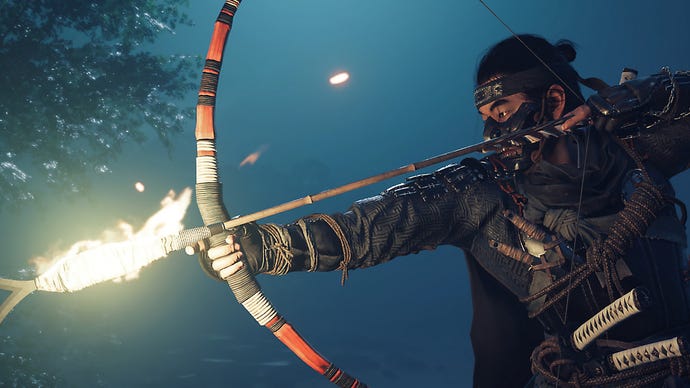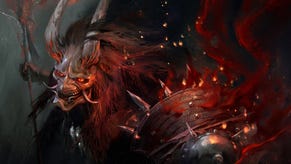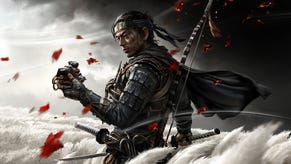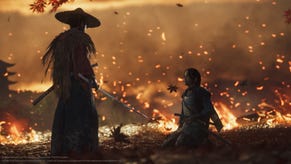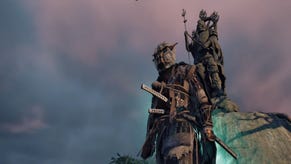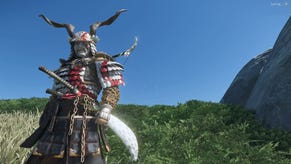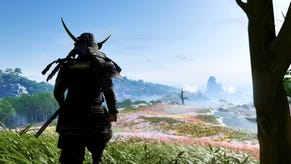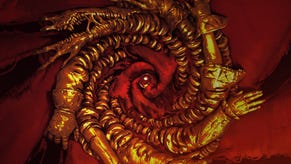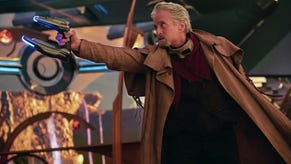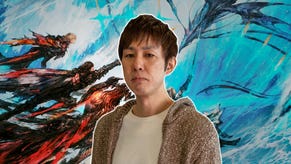How the Studio Behind The Last Guardian Helped Ghost of Tsushima Find Its Direction
Sucker Punch Productions on working with SIE Japan Studio, combat, and the guiding wind.
This article first appeared on USgamer, a partner publication of VG247. Some content, such as this article, has been migrated to VG247 for posterity after USgamer's closure - but it has not been edited or further vetted by the VG247 team.
On November 1274, the armies led by Kublai Khan of the Yuan dynasty landed on Komodahama beach on Tsushima Island, a Japanese territory half between Korea and the Japanese mainland. A massive force of an estimated 20,000 soldiers invaded and utterly defeated the small cavalry of 80 soldiers. It was a bloody conflict, and the Mongol army raided other islands in the area afterwards.
Ultimately the Mongol commander was wounded in the Battle of Hakata Bay in Fukuoka and they decided to retreat back to Korea. On the return trip, a typhoon destroyed much of the invasion fleet. It was the first kamikaze (??, literally "divine wind"), before the term was used in World War 2. It's a historic moment in Japanese history, an analog to Greek Battle of Thermopylae where a Persian army was held back by 300 Spartans that fought to the death.
Ghost of Tsushima is about that period of history. There probably wasn't a lone samurai named Jin who was forced to become "the Ghost," a ninja-like revenant of vengeance. The armies in the game are led by Khotun Khan, a fictional member of the Mongol army. But the game is about this real history in spirit; a single island versus an army. The underdog winning is always a great story.
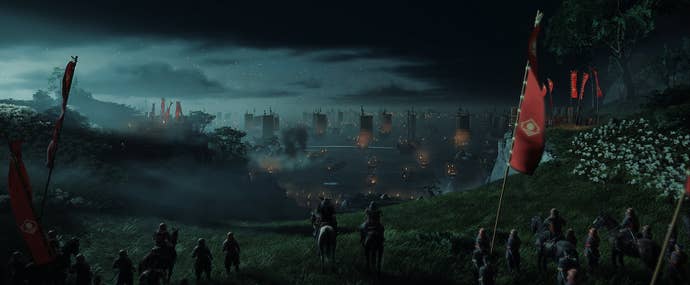
Still Infamous In Japan
Sucker Punch Productions is trying something completely different with Ghost of Tsushima. After four games in the Infamous franchise, two which took place in the studio's home state of Washington, it was time for a change. Instead of another superpowered punch-a-thon, the studio leads sat down and pondered where a new IP could take them. And what came up first was a shared love for Japanese samurai films.
"When we came to this opportunity where we could create a new IP—that doesn't come across very often, so we thought really hard about it," says Ghost of Tsushima creative director Jason Connell. "Turns out [game director Nate Fox] and I are both pretty big samurai fans in terms of film genre. It felt like a good fit for us in terms of the things that we've pulled off in the past. Even then, we named it Ghost of Tsushima and we never ever really turned back. We just iterated on the idea."
Of course, what does an American team in Bellevue, Washington understand about Japanese history? Outside of Japanese films and television, and a bit of historical research, not much. Sucker Punch Productions' parent company Sony Interactive Entertainment is a Japanese company though. So the studio pitched the concept to SIE Japan Studio.
"We reached out to them very early and we were like, 'hey, here's this game we want to make. First of all, what do you think? And two, do you want to help us out for obvious reasons?' It was great, they were super excited about it," says Connell. "They flew a number of us to Japan and helped us with a 10- or 11-day guided tour with a historian through central Japan, southern Japan, Fukuoka. We got to go to Tsushima. We actually got to go to the beach that the invasion happened on which is [Komodohama]. So they were very supportive early on."
With the help of Japan Studio, Sucker Punch also spent time talking to consultants and historians. It needed to know about the history of the invasion of Tsushima. It needed to know how Japanese people from that time lived and how they moved. Sucker Punch even flew in modern-day practitioners of the samurai sword-fighting style to consult on the game and do some motion capture. "They were so freaking fast," says Connell. "We had to ask them to slow down because it was too fast to capture."
Ghost of Tsushima will launch with two voice tracks, the English recorded by Sucker Punch and the Japanese voice track overseen by SIE Japan Studio. Both tracks were recorded "almost simultaneously" and players will have the ability to choose one or the other when they load up Ghost of Tsushima for the first time on PlayStation 4.
The Fight of His Life
In the State of Play video released last week, Sucker Punch finally gave players a look at Ghost of Tsushima's combat. While protagonist Jin starts as an upstanding samurai, over the course of the game he becomes the fearsome Ghost, a ninja-like force of revenge against the Mongol invasion. As a samurai, Jin is well-versed in swordplay with his katana and bow, while the Ghost allows alternate tools like the thrown kunai or smoke bombs. While the presentation showed gameplay as a Samurai or the Ghost, those aren't two different combat systems. Jin can fluidly move between both as the need arises, with all of the tools at his disposal.
"We want to clear up that this is not a game where you choose to be the Samurai, or choose to be the Ghost," says Connell. "We've built a story that is about Jin's evolution and some of the sacrifices he has to make narratively along the way in order to become the Ghost. It's not like he was a samurai, and now he's no longer a samurai, he's a Ghost, and we lock you out of playstyles or anything like that. Even in that Ghost demo that we showed at State of Play, if in the middle of it they wanted to stop and just jump down and fight with stances, parrying, and dodges, you could totally do that."
That means players can challenge an enemy to a standoff, kill them, and then grapple into the shadows to continue as the Ghost. Or they can use stealth to thin the soldiers' numbers, before striding into the middle of the camp and finishing the stragglers off in open swordfights. What players use is based on how they prefer to play. "There are some abilities to kind of perk out your character to push it more towards samurai, push it more towards Ghost, but in general, you have all those abilities at your disposal at all times," says Connell.
In open combat, Jin can dodge and parry attacks, and with specific timing, those can end up becoming instant kills, "almost like a counter." There's also a system of combat stances, which allow you to exploit weaknesses on certain enemy types. One stance might work great against ranged foes, while another allows you to take down those with shields. Ghost of Tsushima is apparently a game where fighting massive groups of enemies isn't recommended though. Connell says that facing two or three enemies is challenging, and above five is probably a signal to drop a smoke bomb and escape.
Alternatively, you can use the standoff system, which allows you to challenge enemies to cool samurai duels. Connell himself admits to being more of a samurai-style player, using standoffs to whittle down the enemy. As Jin, you can challenge enemies to duels whenever you want. But while a standoff looked like an easy way to kill opponents in the demo, there's apparently more skill required and the risks are high.

Likewise, while the Ghost can assassinate foes from the shadows—the State of Play video shows single-target and chain assassinations—not every enemy will die from a short sword in the back. Much like the recent Assassin's Creed games, there are certain foes that you'll only do heavy damage to when you tried to assassinate. Connell notes the prompt changes to "critical strike" instead of assassinate for those enemies.
Unlike the Infamous games, there is no good-evil karma system. Within the story of Ghost of Tsushima, the fall of Jin and his transition into the Ghost is the emotional core, but there will also be gameplay benefits to becoming that legendary figure.
"Jin has to undergo some of these challenges to his samurai code. Some of those challenges in the narrative, emotional challenges that he has, will be gateways to learning unique and new abilities," says Connell. "If you look in the State of Play, we have the map and in the top right corner. There's this thing that says, 'Legend of the Ghost'. This is your legend, as people have heard about this samurai warrior who has somehow taken out hundreds of these enemies."
As your legend grows, you'll unlock new abilities, but the island itself will also react to your passing. Citizens will talk about you, become superstitious or scared of you, or thank you for fighting back. It's similar to the gameplay outcome of Infamous' mortality system—citizens commenting on your actions—but without hard binary choices between good and evil. Within the story, people close to Jin will begin to disapprove of his actions, or lead him further down this path. But for the Mongols, there's only one response: fear. As your legend grows, impressive feats in combat actually cause some enemies to run away.
"He's trying to rid these invaders from his homeland, and in the State of Play we showed Jin, there's a smoke bomb and he throws some kunai out, and like four people are dead, right? And this one guy is like, 'oh, s**t.' He's actually scared and you've taken him off the playing field. He's no longer a threat. That fear can be really powerful as you grow your legend," says Connell.
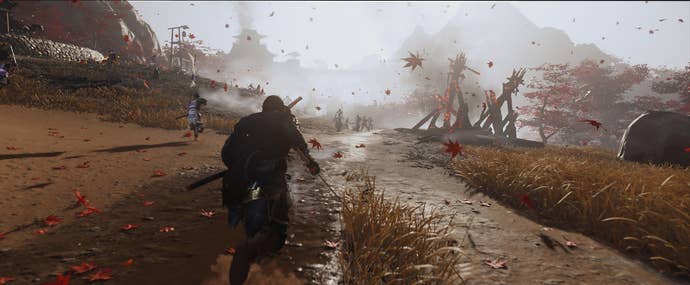
The Wind Will Guide Your Way
Sucker Punch's Infamous games have always been about movement, where getting around the cities is part of the fun. Infamous had electric rail grinding on power lines, while Infamous: Second Son offered super-speed, flight, and more as traversal options. Ghost of Tsushima is a bit more grounded though, with Jin getting around on foot or horseback.
"From the earlier Infamous days, traversal is such a huge part of the way that we make games enjoyable. This one's no different, other than the creative box that it's sitting in. We do have the horseback—running on foot can be good too, but horseback is the most efficient way to get through the island," says Connell.
He points to a sequence in the State of Play video when Jin is tiptoe-ing across a wooden platform on the side of a mountain, looking down on a yellow forest below. This is apparently one of the climbing challenges, where players have to figure out how to make their way up to a location. "There's a puzzle, and figuring out a way to climb up to the top. Sometimes that requires a grapple and sometimes it's just a climbing sequence," he explains. It's akin to the older Assassin's Creed games, before you were able to parkour over anything and everything.
Also like the modern Assassin's Creed games or The Witcher 3, players won't have to worry about their horse dying. "Your horse is not gonna die. Your horse will get scared and run away. You may not be able to bring them back for a brief, brief moment, but nobody's gonna in combat, in gameplay, kill your horse," says Connell. There's also no hunting system in the game, where you kill deer, foxes, or bears for materials to make armor or items.

"It kind of goes in theme with a lot of the other stuff we're doing with nature. Our actor has a nice, sweet sensibility to him. He cares about animals and people, and it comes through in his performance," he tells me.
Getting around the island is helped by Connell's own favorite feature in the game, the Guiding Wind. There are no visible waypoints, helpful glowing arrows or other non-diegetic markers to get around the world. Instead, you put a marker on your map and then at any time you can call up the wind, which blows in the direction of that marker. According to the creative director, the Guiding Wind was the result of an artistic choice that later dovetailed with gameplay choices.
If you look at these early Chanbara samurai films, one key part of the cinematography is movement. The works of Akira Kurosawa, Hiroshi Inagaki, Kenji Misumi, Kihachi Okamoto, or Masaki Kobayashi (below) always feature incidental movement in the background: clouds of dust that whip up around two warriors, leaves blowing around a tragic figure, or billowing smoke on the battlefield.
"We set out to make this game and we made a bullet sheet of, 'here are the art direction goals for the game.' We were just prototyping very early. One of those was 'wind' and the reason it was wind—and this is purely visual, it wasn't a design mechanic at that point—was as part of the backdrop part of the world, right? The reason why we had it on that list was you look at Akira Kurosawa films and there's always motion, movement, and wind," Connell says.
He points to the kamikaze, noting there's a "a spiritual element" to wind within the events Ghost of Tsushima portrays. Early on in development, Sucker Punch decided that wind blowing around literally everything in the world was going to be its visual calling card.
"I knew that it would be a technical hurdle to get right," he says. "That's not an easy thing to do, have everything in your game react to wind if possible. About two years later, a year and a half later, the game had it. Everything was windy. There were trees moving, and grass moving, capes moving, and hair moving, and particles... it was insane. At that time we were realizing that the game was just stunning. It was very very pretty, even early."
Once the wind was a key visual feature and everything moved when the wind blows, then the team realized that it could also be used to guide the player. "We had this idea to let the wind guide you, because it worked already in a way that was thematic. We tried it and I swear it was like a week and it was almost flawless," Connell says. "And then we've been iterating on it for a couple years to make it work with all of our systems and all the different ways that you can use it. So now it's just this great thematic way that you get through the world."
Ghost of Tsushima now stands as one of the swan song games for the PlayStation 4. Sucker Punch kicked the system off with Infamous: Second Son, and now it's ending it with Ghost of Tsushima. "We were very lucky to be one of the first studios to get to work on the PlayStation 4 and have a game that actually came out pretty close to launch. I mean, I got to be one of the first artists to work on the entire thing," says Connell of this final launch. "The beauty of being able to create this game for PS4 again is we've had all this time to mature the tech, understand exactly what our limits are, and just throw all of our energy into the right areas to make sure that we create the most beautiful game that we can. There is a lot of pressure, you know, [as] it's towards some of the last chapters of the PS4."
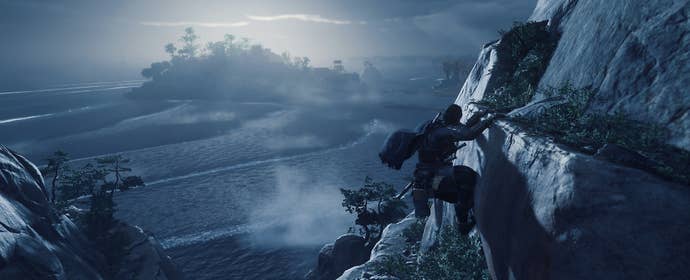
He's less forthcoming about the upcoming PlayStation 5. We already know the PS5 will be backward compatible with PS4 games, so Ghost of Tsushima will likely run on the system, but Sony has been mum on cross-gen titles. Ghost looks stunning on PS4, but already the mind can ponder how it would look on a next-gen console. Microsoft has offered more details on cross-gen option like Smart Delivery, but until Sony reveals more about those systems for PS5, Sucker Punch is firmly focused on this launch, on PS4.
Even beyond the next system, Connell offers nothing about where Ghost of Tsushima could go in the future. "New IP" generally means sequels. Would a further Ghost of Tsushima game involve Jin, or jump time periods while staying in Japan? Is there room for a "Ghost of *insert historical location here*" franchise?
"Even yesterday, we were still making little tweaks to the game," says Connell. "So we are still just 100% focused on July 17, getting the best possible version of this game we've worked really hard on in the hands of everybody. Not worrying about the future or thinking about the future just yet."
